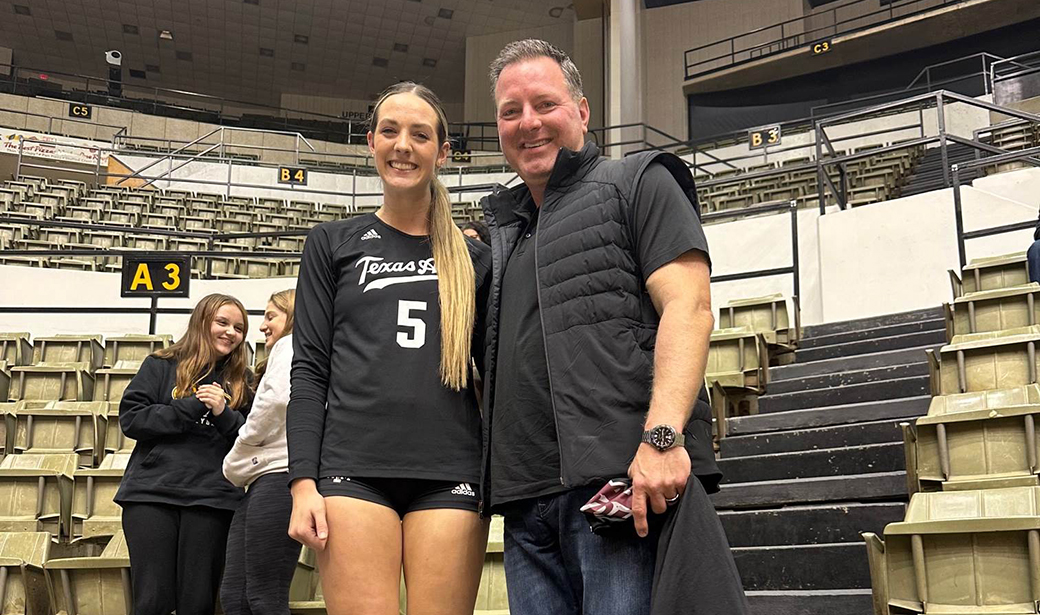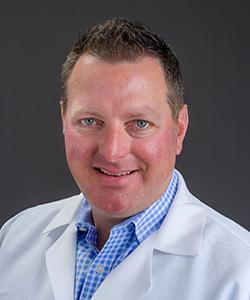Playing sports at a high level is a way of life for the Guinn family, and it was Lexi’s dream to follow her older sister as a college volleyball player.
But during a checkup in sixth grade, Lexi’s doctor noticed her hips and shoulders weren’t level, and she was diagnosed with adolescent idiopathic scoliosis (AIS), or an abnormal spine curve that became clearer as she started to hit her growth spurt.
Although mild scoliosis isn’t a life-threatening condition and most cases do not need treatment, it can negatively impact young people like Lexi who want to be competitive athletes. The most common treatment, posterior spinal fusion, completely corrects scoliosis but can also reduce spinal flexibility and may take up to six months of recovery.
Because of those factors, Lexi and her family looked for other ways to treat her scoliosis, which led to their discovery of vertebral body tethering (VBT) and Daniel Hoernschemeyer, MD, an orthopaedic surgeon at MU Health Care.
The Guinns were hopeful that treatment with VBT would correct Lexi’s scoliosis while also allowing her to play volleyball on a club team, in high school and, hopefully, college.
Lexi had a successful operation, saw her scoliosis corrected and was back competing for her club team at nationals a few months later. As an outside hitter, she had no pain when jumping and moving her arms for kills or blocks.
Now she’s a member of the Texas A&M’s volleyball team and reconnected with Dr. Hoernschemeyer in Columbia when her Aggies took on the Missouri Tigers during the 2022 season.




